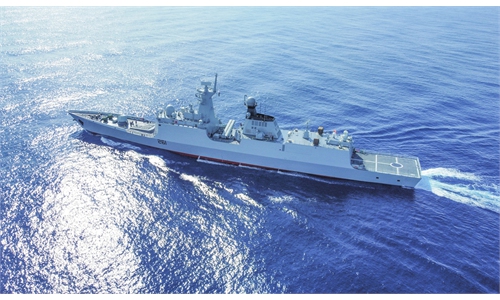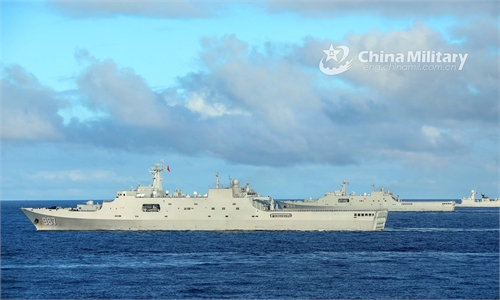Japan, India start fighter jet drills 'with growing military ambitions instigated by US against China'

A Sukhoi Su-30MKI combat aircraft of the Indian Air Force takes part in the first day of the 11th Aero India show in Bangalore on February 14, 2017.Photo:CFP/MANJUNATH KIRAN
Japan and India on Monday launched their first joint fighter jet exercise, a move analysts said exposed the two countries' growing military ambitions against China under the instigation of the US.The 11-day Veer Guardian-23 aerial maneuvers are scheduled to run until January 26 in the airspace around the Japan Air Self-Defense Force's Hyakuri and Iruma air bases in Ibaraki Prefecture, the Japan Times reported on Monday.
The drills aim to continue deepening defense and security ties between Japan and India amid China's growing capabilities in the Indo-Pacific region, the report claimed.
Analysts said that the joint exercise is a reflection of the two countries' long-known and expanding military ambitions.
Having spent a lot in military equipment procurement, India wants to display its presence as a major country by showing off its military capabilities outside the Indian Ocean, Wei Dongxu, a Beijing-based military expert, told the Global Times on Monday.
Japan, on the other hand, welcomed Indian fighters to its soil so it can in return send its warplanes to visit India in the future. This will allow Japan to expand its armed forces' sphere of activity to other parts of the world, now that the country has broken away from its "self-defense only" principle, Wei said.
Both Japan and India are being lured by the US to join its Indo-Pacific strategy in containing China, with Japan planning to interfere in the Taiwan question militarily and India involved in border issues with China, observers said.
From a strategic point of view, despite the joint drills, if a conflict breaks out involving either Japan or India, neither country is likely to have the strategic will or sufficient capability to enter combat, but China should stay on alert and prepare for any eventuality that may arise, analysts said.
In the Veer Guardian-23 exercise, the Indian contingent includes four Su-30MKI multirole fighters, two C-17 Globemaster transport planes, one Il-78 aerial tanker and about 150 personnel, while the Japan Air Self-Defense Force will field four F-2s and an equal number of F-15 multirole fighters, the Japan Times reported.
The joint training could help the Japan Air Self-Defense Force "draw lessons from the extensive operational experience of the Indian Air Force," particularly with regards to China, and the technical innovations it has achieved in its fighters, especially with the Su-30MKI fighters taking part in the exercise, the report cited an India-based defense analyst as saying.
The Chinese People's Liberation Army (PLA) operates the Su-30MKK, the Su-30MK2, the Su-35, the J-11, the J-15 and the J-16, which are all fighters derived from the Russian Su-27, like India's Su-30MKI, as they share some basic characteristics, observers said.
However, experts pointed out that the Su-30MKI is specially customized for India, and the versions imported by China are different from the Indian version, not to mention those that are self-developed by China using domestic technologies.




